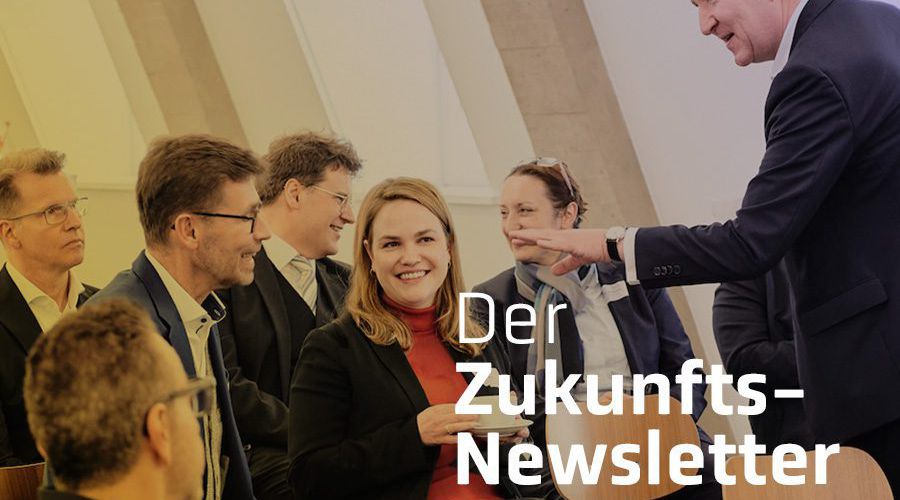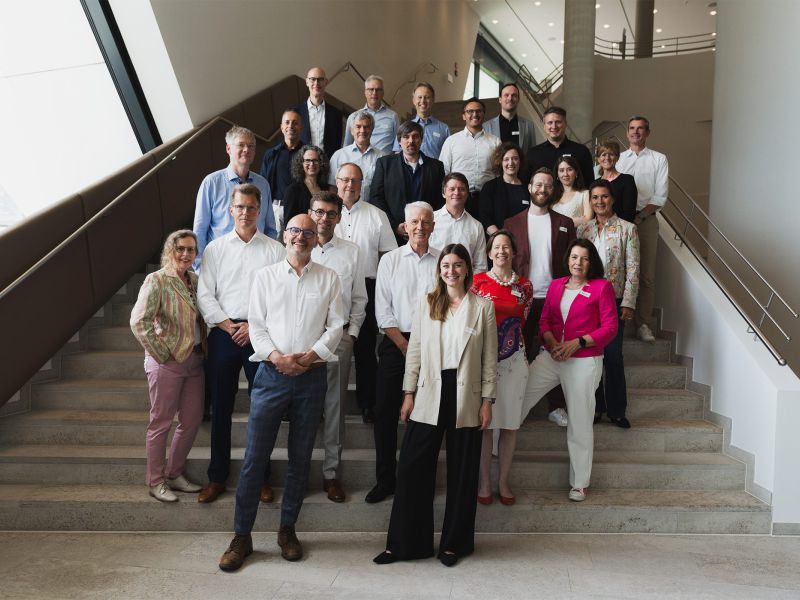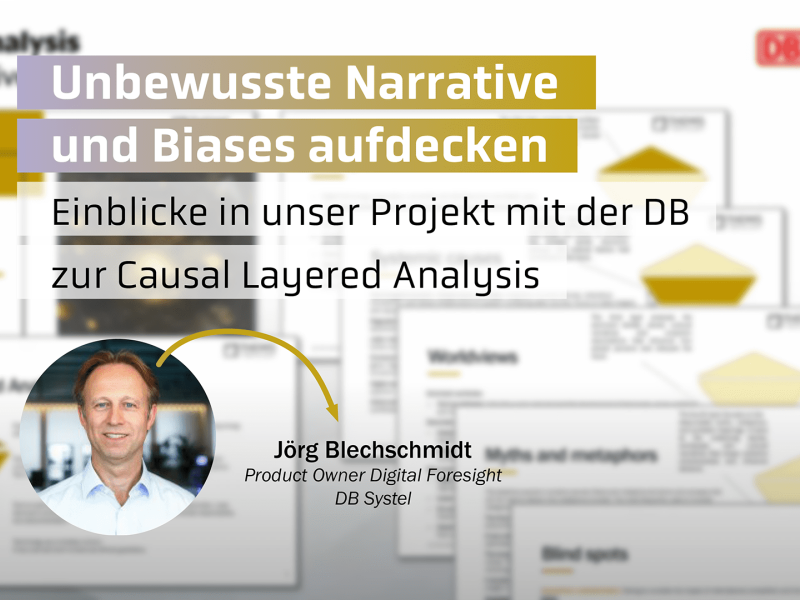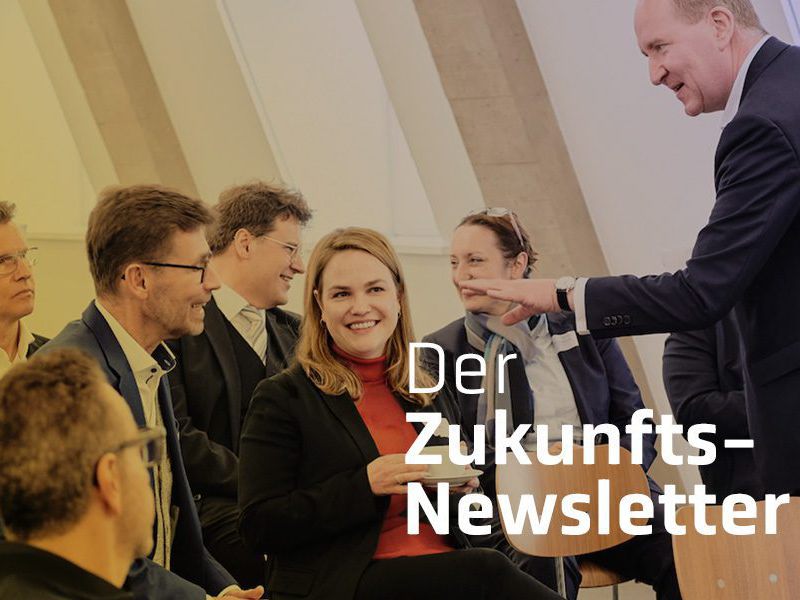Scenarios for German industry – invitation to the Future Lab

- Leader in the manufacturing sector: Mechanical engineering drives the economy with a 5.2% share of gross value added.
- Pension crisis with nationwide protests: contribution rates rise to 28.5%
- Mega breakthrough: researchers find concrete replacement thanks to quantum computer
- Robots preferred as colleagues: a new trend in the German working world
- Innovation Act takes effect: Federal government reports increase in domestic production
This or something similar could be the headlines of a possible scenario in the year 2045.
In this sector, plant and mechanical engineering has long since overtaken the German automotive industry and tops the list of manufacturing industries in Germany. This is largely due to the rapid developments in robotics and profitable circular economy models, which gained enormous momentum in the 2030s.
Increasing geopolitical uncertainties and growing risks in global supply chains led German industry to adopt more re-shoring and near-shoring strategies at the end of the 2020s. The war in Ukraine and Covid left their mark on the population. Ultimately, this and the high pressure exerted by the industry on political decision-makers led to the German government introducing the first measures to strengthen national independence. A key element of these efforts was the Technology and Innovation Promotion Act, which aimed to create incentives for the twin transition.
The decision to relocate production back from countries with lower costs, combined with the EU’s increasingly protectionist stance, temporarily led to international tensions. In the first few years, production costs in key industries rose, which had a negative impact on exports. This situation, combined with demographic change, increased the pressure on companies to increase their efficiency. In 2030, members of the baby boomer generation were rarely seen in factory halls. But despite the shortage of labor, it became clear that by eliminating personnel inefficiencies and using AI and robotics, it was possible to increase productivity and reduce costs enormously. But it was also clear that the automation of the 21st century had little in common with that of the previous century.
Thinking through scenarios
What would these approaches to a scenario mean for the automotive, metal and electrical industries, for the energy industry or for a completely different sector? What consequences would this have for your personnel planning, training and further education? What steps need to be taken today? We will be working on this and other scenarios in the coming months.
As a project partner of this study, you will receive new impulses and ideas that you can use sustainably for the successful orientation of your company. You can still take part in the scenario process until May 31. Find out more about the project partnership here or in a personal, non-binding discussion.
The future of industrial work in Germany – a peek behind the project curtain
Since January, we at Themis Foresight have been working on our new study “The future of industrial work in Germany”. To date, we have conducted over 30 interviews with innovators, industry representatives, scientists, trade unionists, analysts, political and social actors.
The interesting thing is that the experts on our Expert Panel mostly agree that the current status quo is unsatisfactory, and the vast majority of them are in favor of expanding the EU as an industrial location, including Germany. However, there are very different views on how we can achieve a target state in which German industry will still be among the world leaders in 25 years’ time.
Invitation to dialog and co-creation: Future Lab
These differences are important because the competition between concepts shows that different futures are possible. We cordially invite you to take part in our Future Lab on June 18 at our project partner Südwestmetall, where we will cast these ideas into scenarios.
Progress arises from the friction of different ideas. This friction also means that the participants in our Future Labs challenge each other: Are the assumptions on which our current strategies for innovation, product cycles, target markets or combating the shortage of skilled workers are based correct? What does the automation of the 21st century look like? To what extent or should we even consider forecasts for the EU economic area? And if so, with what basic attitude? Do we accept the forecasts as a target or do we want to skip the very low bar? And if so, by how much? Is there actually a shortage of skilled workers or is there a poor distribution of work and far too many pointless jobs that will have disappeared by 2032? Is the artificial separation of manual and manual labor, of industrial and commercial activities a concept that can produce high-tech in the long term and sustainably?
30 people – many perspectives. In addition to our project partners, we also invite external guests to gain an insight into the topic at our exclusive Future Labs. Join us in Stuttgart on June 18 to discuss what the future of industry and industrial work in Germany could look like. Secure your place among the thought leaders.
We organize a series of workstreams and events during the course of our study. Alongside our project partners Deutsche Bahn, Südwestmetall and PrtX, our scientific advisory board is involved in discussing trickier questions, checking their plausibility and formulating critical uncertainties that are important for our scenario work.
At our last Future Lab in Berlin at the beginning of March, 30 representatives from Group Management Boards, strategy and innovation departments met to develop so-called Future Wheels. This simple method enables the consequences of formulated statements about the future to be presented more clearly. What are the first, second, third, etc. What are the first, second, third, etc. degree consequences if, for example, industrial companies in Germany or Europe only have so-called lead plants where innovation takes place, but mass production takes place at many locations in different markets? Or what would a working world look like in which “the industrial worker” no longer exists and the image of work is no longer determined by collar color or educational background?
Our Future Labs also thrive on first-class impulses. We were therefore delighted to be able to take a look at the future guidelines for a European industrial policy with former BDI Managing Director Joachim Lang and discuss his theses. And to listen to Zeit journalist Vanessa Vu’s assessment of what the major levers for the migration of skilled workers to Germany will be.
Lively discussions and exciting insights into the foresight work and numerous in-depth interviews of recent months also await you in the next Future Lab.
What happens next in the project? Invitation to the project partnership
In addition to the ongoing sessions with our project partners and our scientific advisory board, there are four other major milestones to come:
- The development of scenarios for the future of industry in Germany in June,
- The development of a desirable future image of industrial work in Germany in September,
- The development of derivations and recommendations for the strategic personnel planning of industrial companies and
- The publication of the study at the end of the year.
You still have the chance to participate as a project partner until the end of May. What opportunities and risks do the various scenarios present for different sectors? On request, we will also be happy to test your strategy or business model in the respective scenarios.
Your
Carina Stöttner and Jan Berger
Founder Themis Foresight
Would you like to receive the newsletter (once a month) directly in your mailbox?
Click here to register:





